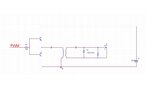deepeshmishra
Member level 2
Hello Friends,
Any one have a good pulse transformer based half bridge driver design?
Please give reference about turns of primary and secondary, Mosfet protection.
Any one have a good pulse transformer based half bridge driver design?
Please give reference about turns of primary and secondary, Mosfet protection.
